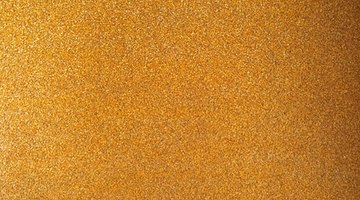How to Paint Formica Walls
If you want to paint your Formica walls, consider two factors. First, unlike wood and drywall, Formica is non-porous, making it unsuitable for paint adhesion. Second, because Formica is smooth and slick, paint tends to run during the application process.

Before you get started, know the proper techniques that will allow you to combat these complications so you can generate an attractive, long-lasting finish.
Things You Will Need
- Dish soap
- Coarse brush
- Rags
- Palm sander
- 120-grit sandpaper
- Tackcloths
- Heavy-duty fabric dropcloths
- 5-gallon bucket
- Nap roller cover
- Roller frame
- 4-inch latex paintbrush
- Latex bonding primer
- Interior latex paint
Tip
Over-application will cause the paint to run or sag. Because Formica is so smooth, apply two thin coats of paint. Do not try to cover the wall in one thick coat.
Warning
Do not use rags in place of a tackcloth as this will leave dust on the Formica that may interfere with adhesion.
Soap can interfere with adhesion, so rinse it all away before you apply primer.
-
Cover the flooring beneath the Formica walls with fabric dropcloths.
-
Clean the Formica walls with soap and a coarse brush. Rinse away all soapy residue, using wet rags. Allow the walls to dry.
-
Sand the Formica wall to promote paint adhesion, using a palm sander loaded with 120-grit sandpaper. Sand until the Formica feels slightly rough to your fingertips.
-
Wipe down the Formica wall with a tackcloth.
-
Apply a thin coat of primer to the wall, using the roller. Smooth the primer, using a paintbrush. Work quickly before the primer begins to dry. Watch closely for sags or runs in the primer and smooth these flaws with the paintbrush.
-
Wash the brush with water. Allow the Formica to dry for three hours.
-
Apply two thin coats of paint in the same manner as you did the primer. Allow two hours of dry time between coats.
The Drip Cap
- If you want to paint your Formica walls, consider two factors.
- Clean the Formica walls with soap and a coarse brush.
- Watch closely for sags or runs in the primer and smooth these flaws with the paintbrush.
- Wash the brush with water.
Writer Bio
Ryan Lawrence is a freelance writer based in Boulder, Colorado. He has been writing professionally since 1999. He has 10 years of experience as a professional painting contractor. Lawrence writes for High Class Blogs and Yodle. He has a bachelor's degree in journalism and public relations with a minor in history from the University of Oklahoma.
Photo Credits
- sandpapier image by Thomas Aumann from Fotolia.com
- sandpapier image by Thomas Aumann from Fotolia.com
More Articles



